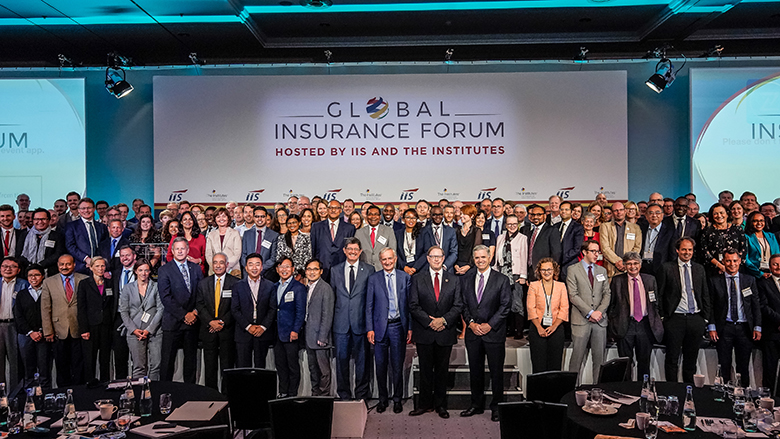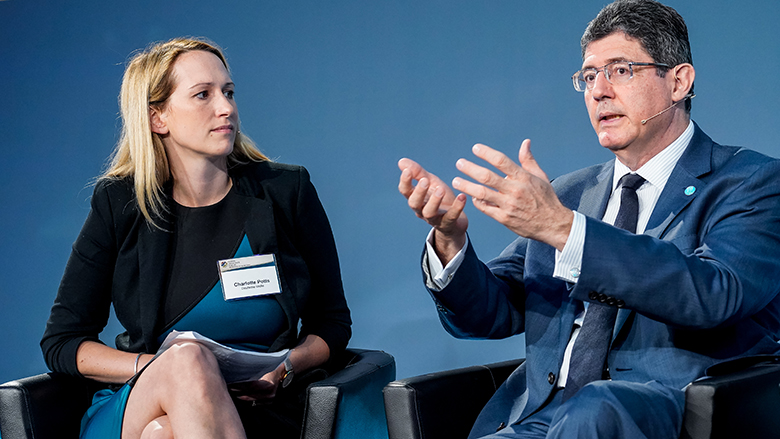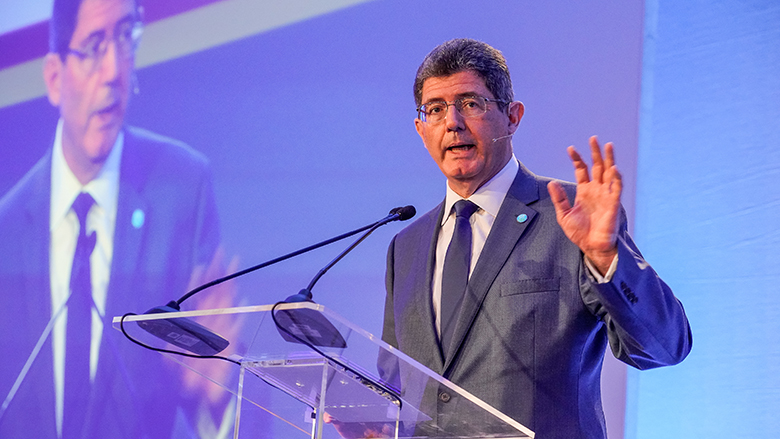Good afternoon, ladies and gentlemen. I am pleased to be with you to speak about a very distinctive topic on the agenda of this year’s Global Insurance Forum—the role of insurance in building resilience. It is a core topic for the World Bank in partnering with emerging market and developing countries (EMDEs), which are most affected by the impact of natural disasters and climate change. It also serves as an example of how the private sector can help scale up finance for development.
The long-term perspective of insurers as both underwriters and investors plays a critical role in supporting resilient societies and sustainable growth. Climate change is an existential risk, although sometimes still not perceived as a clear and imminent threat. Often its adverse impact remains underpriced due to model uncertainty, regulatory rules or industry practices—e.g., the tendency of rating agencies not to incorporate risks beyond 5 years into their credit assessment methodologies. However, when insurers go beyond traditional short-term coverage and develop products against the impact of climate-related losses, they send price signals affecting general investor behavior. Let me put it this way: if you, as insurer, short certain sectors—or raise their premiums—because they have become too risky in models that look at long-term scenarios, markets will notice, and corporates will respond.
The growing intensity of natural disasters presages the likely impact of climate change, especially in the poorest countries, which are at the heart of the World Bank’s development agenda. The frequency of some natural disaster has increased. Other risks, such as forest fires, have become more intense and difficult to manage, due to higher temperatures, drier air and winds generated by strong pressure differentials. Widespread fires in boreal regions, the Amazon, the United States and many places in Europe have affected the health, life and livelihoods of growing populations around the globe.
Natural disasters and the adverse impact of climate change can create a downward spiral of economic degradation. It is estimated that more than 90 percent of people facing extreme poverty today are in countries that are politically fragile or vulnerable to natural disasters, or, in many cases, both. We believe that risk-sharing mechanisms, together with risk mitigation and other management mechanisms, have a unique role in protecting poor and vulnerable people and can be viable if adequately designed and supported. The World Bank—through our Disaster Risk Financing and Insurance Program (DRFIP)—has developed a diverse array of financial protection instruments. For instance, in February, we issued a 1.4 billion-dollar catastrophe (CAT) bond, covering earthquake risk in Chile, Colombia, Mexico and Peru—the largest CAT bond on record. We have also partnered with countries in Asia to protect subnational entities against several other natural disasters.
We have been working with the insurance industry to create risk transfers mechanisms across the developing world, with a view to protecting at least 400 million more people against natural disasters. This is at the heart of our partnership with the Insurance Development Forum (IDF), which we will discuss in the next days. This partnership is centered on developing transparent models that link the probability and economic impact of natural disasters, and the development of adequate legal and regulatory frameworks that can facilitate the provision of insurance and re-insurance options in different institutional landscapes. And this is why we are very pleased about the creation of the Global Risk Financing Facility (GRiF) as part of the InsuResilience Global Partnership,[1] which will help leverage the resources provided by generous donors and enables us to work more effectively with the private sector.

© Marc Vorwerk
However, we can do more, by using both sides of the balance sheet of insurers. Some of you may remember my talk at the 2016 Annual Conference of the International Association of Insurance Supervisors (IAIS) on how investing in climate-smart infrastructure can be a great way to “self-insure” against the risk of a sudden depreciation of assets supporting insurers’ reserve coverage (and, thus, minimizing the risk of “stranded assets”). We know that infrastructure projects tend to yield predictable and stable cash flows, with low correlation to other assets and low downgrade risk, providing a natural match to many insurers’ long-term liabilities. They also play a crucial role for sustainable economic growth by helping (i) lift millions of people out of poverty, (ii) reduce carbon emissions (of which 50 percent are associated with infrastructure), and (iii) bolster the resilience of many places and societies.
However, most insurance regulations do not necessarily facilitate this strategy. Capital charges for investments in many risk-based solvency regimes typically reflect losses that may occur if investors need to sell assets quickly, charging for price volatility when infrastructure assets are mostly illiquid and carried to term. The regulatory treatment of infrastructure debt in most countries implies that its credit risk evolves like that of corporates, while infrastructure debt has a risk profile that is vastly different from that. Solvency regimes typically do not reflect the actual favorable credit performance of infrastructure relative to corporate exposures, which may contribute to the under-investment in infrastructure by institutional investors, especially in EMDEs.
Indeed, risks in EMDE infrastructure may be lower than usually perceived. The World Bank has conducted some studies using large samples of infrastructure project loans and debt securities provided by rating agencies. The findings suggest that if current regulations reflected the lower default risk and higher recovery rates these transactions have shown over the last 30 years, significant amount of regulatory capital could be freed, helping expand the supply of capital for climate-smart infrastructure assets around the globe.
In this context, we have been engaging regulators to better align the financing of the economy and the liabilities-driven investment of insurers based on empirical evidence and consistent with existing prudential standards. We have had a very encouraging dialogue with the IAIS, whose Secretary General will join us on the third day of this conference, and the European Insurance and Occupational Pensions Authority (EIOPA), which has been a trailblazer in developing a differentiated regulatory treatment of infrastructure investment. These efforts also inform our contributions to the Network for Greening the Financial System (NGFS), which brings together central banks and supervisors to integrate sustainability in micro- and macroprudential policies and measures. As observer to the NGSF, we will focus on developing risk models, stress tests, and scenario analyses, which could help evaluate the impact of climate change on national economies and financial systems.

© Marc Vorwerk
To conclude, let me highlight two key areas in which I am sure we will make progress in the near term and over the long run:
- We need a more inclusive and transparent coverage and use of risk models for natural disasters, which is a priority for the IDF in its dialogue with potential users of such risk transfers mechanisms, and will influence many policy choices related to climate change adaptation and mitigation in the years to come. The pricing of these and broader climate-change related risks provides important signals to companies in their choice of investment, technologies and processes, heralding the role of the industry in helping combat climate change in the long run.
- We need to identify the possibilities and address the hurdles, including regulatory impediments, to investment in climate-smart, quality infrastructure, which increases the resilience of economies, including through adaptation and by stimulating sustainable growth, especially in countries with young demographics.
In this process, I believe returns for insurers can be fair and solid, and penetration in new markets accelerated, with very positive impact on global welfare. Our partnership with industry and the extension of coverage are important elements in our strategy to achieve our twin goals of eliminating extreme poverty and raising shared prosperity.
Thank you.
[1] The InsuResilience Global Partnership for Climate and Disaster Risk Finance and Insurance Solutions was launched at the 2017 UN Climate Conference in Bonn. The Partnership (comprising more than 40 members) aims to strengthen the resilience of developing countries and protect the lives and livelihoods of poor and vulnerable people against the impacts of disasters.

